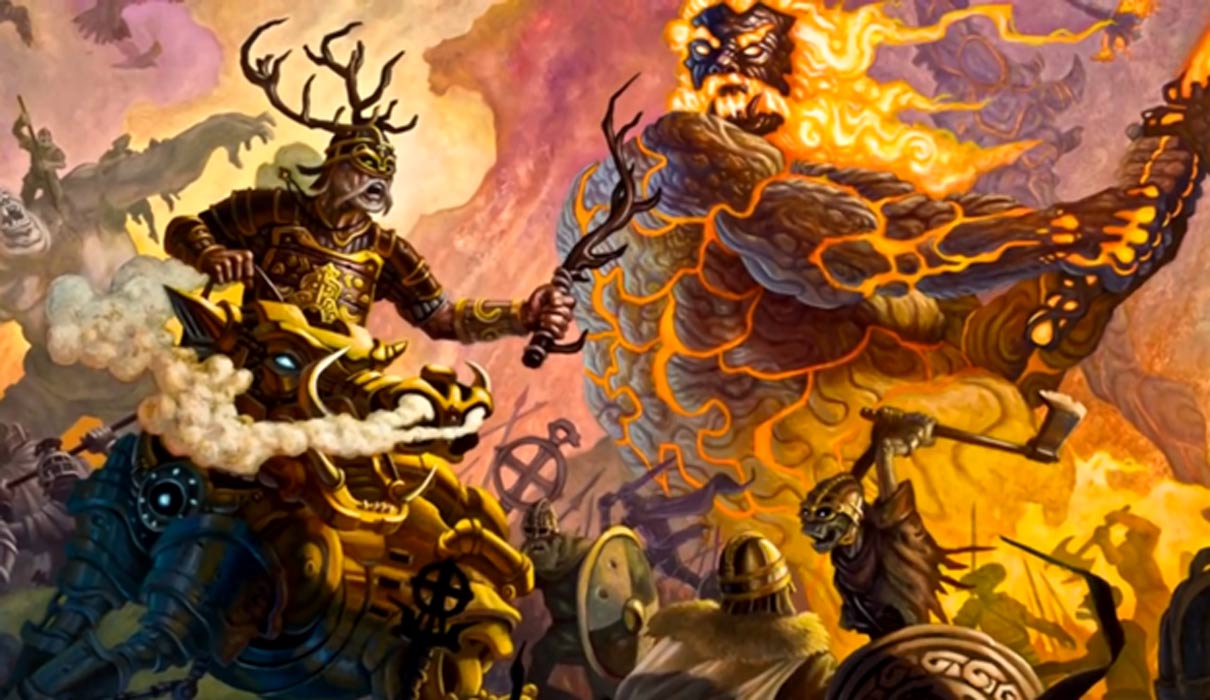Ragnarök, a cataclysmic event of apocalyptic proportions within Norse mythology, serves as a pivotal and foreboding narrative that embodies the cyclical nature of creation, destruction, and renewal. This article delves into the captivating lore, profound symbolism, and enduring legacy of Ragnarök, shedding light on its mythological significance within the rich tapestry of Norse cosmology.
Mythological Prelude
Ragnarök, often translated as "the Fate of the Gods," is the prophesied series of events that culminate in a cosmic upheaval, leading to the end of the current world and the subsequent rebirth of a new one. This cataclysmic sequence of occurrences is intricately woven into the fabric of Norse mythology, shaping the fate of both divine entities and mortal realms.
Prophetic Events
- Fateful Encounters: Ragnarök is characterized by a series of fateful encounters and battles, pitting the divine forces of order and chaos against each other in an epic struggle that heralds the end of an era.
- Foretold Participants: The cataclysmic events of Ragnarök involve the participation of various mythological figures, including the gods Odin, Thor, Loki, and Freyr, alongside formidable entities such as the wolf Fenrir, the serpent Jörmungandr, and the fire giant Surtr.
Apocalyptic Battles
- Clash of Titans: Ragnarök is marked by intense and climactic battles, including the epic confrontations between the gods and their adversaries, symbolizing the ultimate struggle between cosmic order and primordial chaos.
- Inevitable Destruction: The cataclysmic battles and upheavals of Ragnarök lead to the destruction of the existing world, as natural forces run amok, celestial bodies are devoured, and the fabric of reality unravels.
Symbolism and Themes
- Cyclical Nature of Existence: Ragnarök embodies the cyclical nature of existence within Norse cosmology, signifying the perpetual ebb and flow of creation, destruction, and renewal that defines the cosmic order.
- Duality of Forces: The cataclysmic events of Ragnarök underscore the eternal tension between order and chaos, light and darkness, and the inherent struggle that shapes the fabric of the cosmos.
Prophecies and Aftermath
- Foretold Prophecies: The cataclysmic events of Ragnarök are intricately tied to prophecies and visions, foretelling the fate of the gods, the emergence of new worlds, and the renewal of cosmic cycles.
- Rebirth and Renewal: Despite the devastation wrought by Ragnarök, the cataclysmic event heralds the dawn of a new era, marked by the emergence of new gods, the revival of celestial bodies, and the renewal of the natural world.
Legacy and Cultural Impact
- Influence in Literature and Art: The captivating allure of Ragnarök has left an indelible mark on Norse literature, sagas, and artistic interpretations, solidifying its enduring influence within the cultural tapestry of the Norse people.
- Contemporary Resonance: The profound themes and symbolism of Ragnarök continue to inspire artistic expressions, literature, and popular culture, portraying the cataclysmic event as a potent symbol of cyclical renewal and the enduring resilience of the cosmos.
Conclusion
Ragnarök, the cataclysmic event of apocalyptic proportions within Norse mythology, stands as a profound testament to the cyclical nature of creation, destruction, and renewal. Its enduring legacy and mythological significance continue to captivate and intrigue, serving as a timeless emblem of the eternal struggle between order and chaos, and the enduring resilience of the cosmos within Norse mythological lore.








0 comments:
Posting Komentar